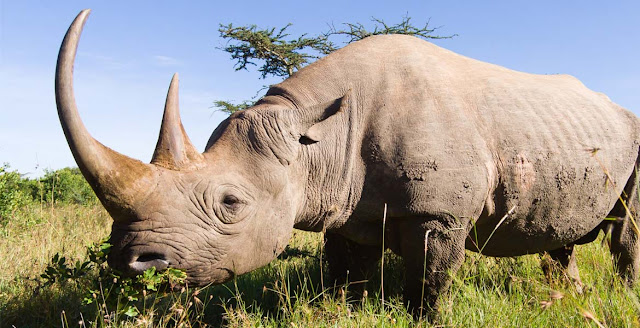Welcome to Mikumi
1.
Mikumi National Park
Mikumi National Park abuts the northern
border of Africa’s biggest game reserve – the Selous – and is transacted by the
surfaced road between Dar es Salaam and Iringa. It is thus the most accessible
part of a 75,000 square kilometre (47,000 square mile) tract of wilderness that
stretches east almost as far as the Indian Ocean.
Mikumi is an important educational and
research centre. Among the various projects being carried out is an ongoing
field study of yellow baboons, which is one of just a handful of such long-term
primate studies on the continent.
To the south, Mikumi is contiguous with
Selous Game Reserve.
The open horizons and abundant wildlife of
the Mkata Floodplain, the popular centrepiece of Mikumi, draw frequent
comparisons to the more famous Serengeti Plains.
The Mikumi National Park near Morogoro,
Tanzania, was established in 1964. It covers an area of 3230 km² hence is the
fifth largest in the country. The park is crossed by Tanzania's A-7 highway.
The Mikumi is bordered to the south with
the Selous Game Reserve, the two areas forming a unique ecosystem. Two other
natural areas bordering the national park are the Udzungwa Mountains and
Uluguru Mountains.
 |
| Udzungwa Mountains |
 |
| Uluguru Mountains |
The landscape of Mikumi is often compared to that of the Serengeti. The road that crosses the park divides it into two areas with partially distinct environments. The area north-west is characterized by the alluvial plain of the river basin Mkata. The vegetation of this area consists of savannah dotted with acacia, baobab, tamarinds, and some rare palm. In this area, at the furthest from the road, there are spectacular rock formations of the mountains Rubeho and Uluguru. The southeast part of the park is less rich in wildlife, and not very accessible.
Lions survey their grassy kingdom – and the
zebra, wildebeest, impala and buffalo herds that migrate across it – from the
flattened tops of termite mounds, or sometimes, during the rains, from perches
high in the trees. Giraffes forage in the isolated acacia stands that fringe
the Mkata River, islets of shade favored also by Mikumi’s elephants.
Criss-crossed by a good circuit of
game-viewing roads, the Mkata Floodplain is perhaps the most reliable place in
Tanzania for sightings of the powerful eland, the world’s largest antelope. The
equally impressive greater kudu and sable antelope haunt the miombo-covered
foothills of the mountains that rise from the park’s borders.
More than 400 bird species have been
recorded, with such colourful common residents as the lilac-breasted roller,
yellow-throated long claw and battler eagle joined by a host of European
migrants during the rainy season. Hippos are the star attraction of the pair of
pools situated 5km north of the main entrance gate, supported by an
ever-changing cast of water birds.
The fauna includes many species
characteristic of the African savannah. According to local guides at Mikumi,
chances of seeing a lion who climbs a tree trunk is larger than in Manyara
(famous for being one of the few places where the lions exhibit this behaviour).
The park contains a subspecies of giraffe, that biologists consider the link
between the Masai giraffe and the reticulated or Somali giraffe. Other animals
in the park are elephants, zebras, impala, eland, kudu, black antelope,
baboons, wildebeests and buffaloes. At about 5 km from the north of the park,
there are two artificial pools inhabited by hippos. More than 400 different
species of birds also inhabit the park.
2.
Animals
How to get there
A good surfaced road connects Mikumi to Dar
es Salaam via Morogoro, a roughly 4-hour drive.
Also road connections to Udzungwa, Ruaha
and (dry season only) Selous.
Charter flight from Dar es Salaam, Arusha
or Selous. Local buses run from Dar to park HQ where game drives can be
arranged.
Accommodation
Two lodges, three luxury tented camps,
three campsites.
Guest houses in Mikumi town on the park
border. One lodge is proposed at Mahondo and one permanent tented camp at
Lumaaga
Mkomazi National Park















Post a Comment